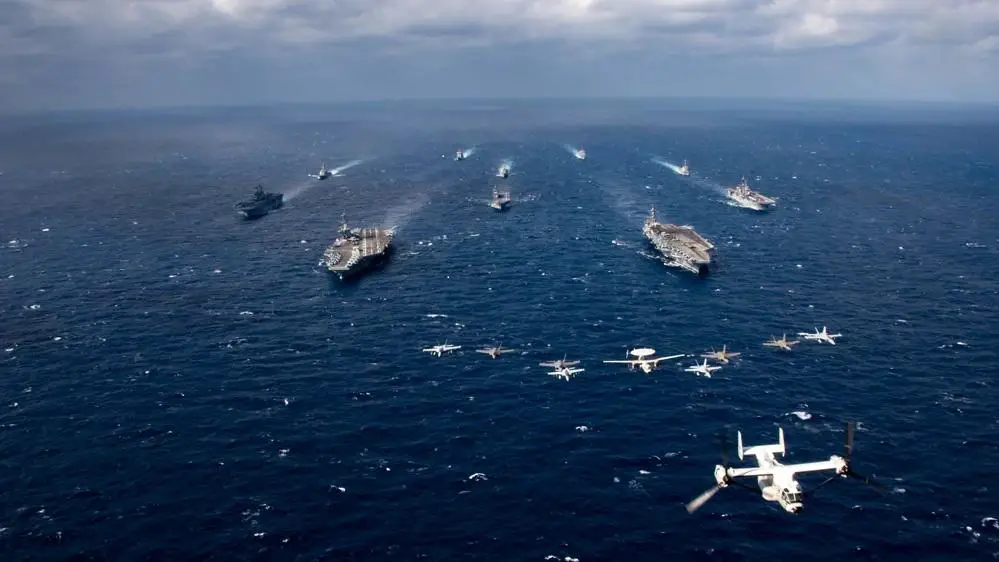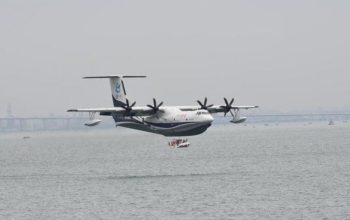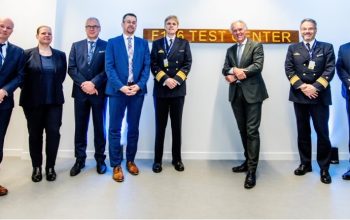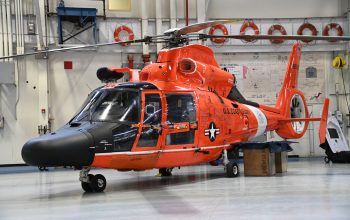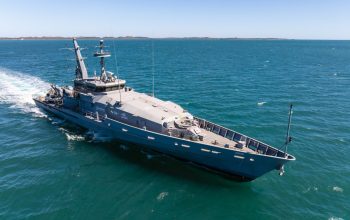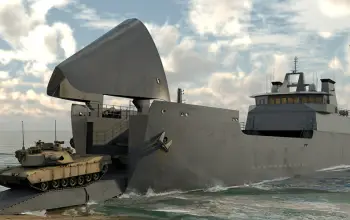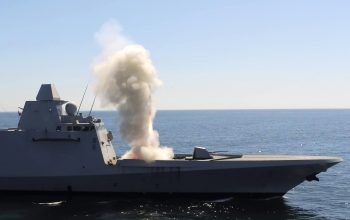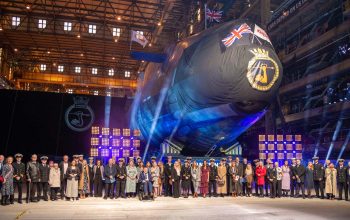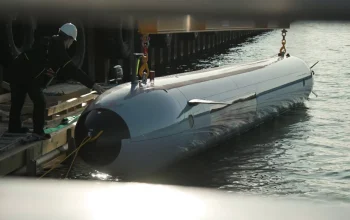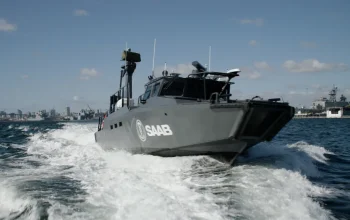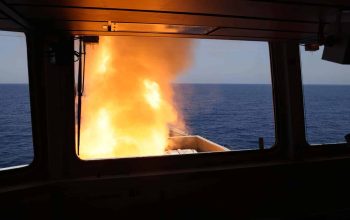Carl Vinson and Abraham Lincoln Carrier Strike Groups began dual carrier operations in the South China Sea, Jan. 23, 2022. The U.S. Navy Carrier Strike Groups, led by their flagships USS Carl Vinson (CVN 70) of Carrier Strike Group (CSG) 1 and USS Abraham Lincoln (CVN 72) of Carrier Strike Group (CSG) 3, will engage in joint operations to include enhanced maritime communication operations, anti-submarine warfare operations, air warfare operations, replenishments-at-sea, cross-deck flight operations and maritime interdiction operations to strengthen maritime integrated-at-sea operations and combat readiness. The training will be conducted in accordance with international law in international waters. The ships and aircraft of the two carrier strike groups, with over 14,000 Sailors and Marines, will conduct coordinated surface and air operations in a complex maritime environment to demonstrate the U.S. Indo-Pacific Command Joint Force’s ability to deliver a powerful maritime force.
“Our ability to rapidly aggregate and work collectively alongside CSG 3, highlights the U.S. Navy’s ability to deliver overwhelming maritime force, when called upon, to support a free and open Indo-Pacific region,” said Rear Adm. Dan Martin, commander, CSG 1. “We are committed to ensuring the lawful use of the sea and free flow of commerce while deterring those who challenge the shared vision of a free and open Indo-Pacific now and into the long-term future.”
Training with Carrier Strike Group 1 in the South China Sea is a tremendously valuable opportunity,” said Rear Adm. J.T. Anderson, commander, Carrier Strike Group (CSG) 3. “Operations like these allow us to improve our combat credible capability, reassure our allies and partners, and demonstrate our resolve as a Navy to ensure regional stability and counter malign influence.”

Coordinated maritime engagements and operations in the South China Sea are part of the U.S. Navy’s routine presence in the Indo-Pacific. Since arriving in the U.S. 7th Fleet region in early September, CSG 1 units have participated in multiple operations and exercises notably: MALABAR 2021; MPX 2021; and several multi-carrier, multi-nation operations, including multiple allied carrier strike group operations in the Philippine Sea led by flagships USS Ronald Reagan (CVN 76) and USS Carl Vinson (CVN 70) joined by Japan Maritime Self-Defense Force’s (JMSDF) Hyuga-class helicopter destroyer JS Ise (DDH 182) and the United Kingdom’s carrier strike group (CSG 21) led by HMS Queen Elizabeth (R08) in October 2021. More recently, CSG 1 participated in ANNUALEX 2021, an exercise in the Philippine Sea that featured five participating international navies: the Royal Australian Navy (RAN), Royal Canadian Navy (RCN), German Navy (GMN), Japan Maritime Self-Defense Force (JMSDF), and the U.S. Navy, strengthening collective readiness and maritime superiority.
The VINCSG consists of CSG 1 including aircraft carrier USS Carl Vinson (CVN 70); Ticonderoga-class guided-missile cruiser USS Lake Champlain (CG 57); Arleigh Burke-class guided-missile destroyers USS Stockdale (DDG 106) and USS Chafee (DDG 90) of Destroyer Squadron (DESRON) 1; Henry J. Kaiser-class Fleet replenishment ship USNS Yukon (T-AO 202); Lewis and Clark-class dry cargo and ammunition ship USNS Washington Chambers (T-AKE 11) and nine squadrons of embarked Carrier Air Wing (CVW) 2. CVW-2 consists of an F-35C squadron, the “Argonauts” of Strike Fighter Squadron (VFA) 147; three F/A-18E/F Super Hornet squadrons, the “Bounty Hunters” of VFA-2, the “Stingers” of VFA-113, and the “Golden Dragons” of VFA-192; the “Gauntlets” of Electronic Attack Squadron (VAQ) 136, operating the EA-18G Growler; the “Black Eagles” of Airborne Command and Control Squadron (VAW) 113, operating the E-2D Advanced Hawkeye; the “Titans” of Fleet Logistics Multi-Mission Squadron (VRM) 30, operating the CMV-22B Osprey; the “Black Knights” of Helicopter Sea Combat Squadron (HSC) 4, operating the MH-60S Sea Hawk; and the “Blue Hawks” of Helicopter Maritime Strike Squadron (HSM) 78, operating the MH-60R Sea Hawk.
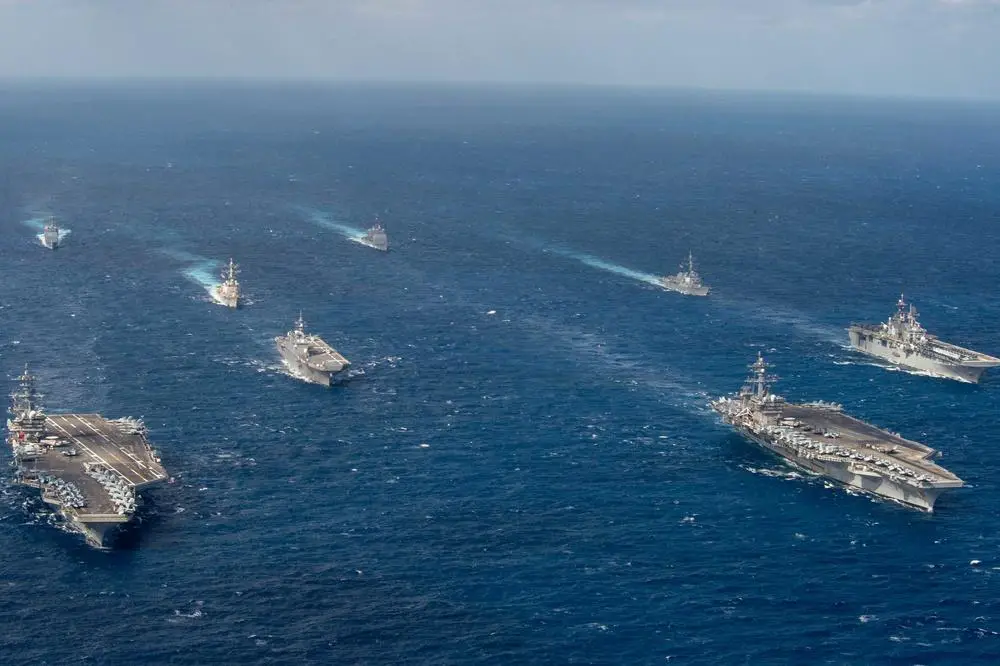
The ABECSG consists of CSG 3 including aircraft carrier USS Abraham Lincoln (CVN 72); Carrier Air Wing (CVW) 9; Destroyer Squadron 21; the Ticonderoga-class guided-missile cruiser USS Mobile Bay (CG 53); and the Arleigh Burke-class guided-missile destroyers USS Fitzgerald (DDG 62), USS Gridley (DDG 101), USS Sampson (DDG 102) and USS Spruance (DDG 111). CVW 9 consists of an F-35C squadron, the “Black Knights” of Marine Fighter Attack Squadron (VMFA) 314; three F/A-18E/F Super Hornet squadrons, the “Tophatters” of Strike Fighter Squadron (VFA) 14; “Black Aces” of Strike Fighter Squadron (VFA) 41, the “Vigilantes” of Strike Fighter Squadron (VFA) 151; “Wizards” of Electronic Attack Squadron (VAQ) 133, operating the EA-18G Growler; “Wallbangers” of Carrier Airborne Early Warning Squadron (VAW) 117, operating the E-2D Advanced Hawkeye; “Titans” of Fleet Logistics Multi-Mission Squadron (VRM) 30, operating the CMV-22B Osprey; “Chargers” of Helicopter Sea Combat Squadron (HSC) 14 operating the MH-60S Sea Hawk; and “Raptors” of Helicopter Maritime Strike Squadron (HSM) 71, operating the MH-60R Sea Hawk.
As the U.S. Navy’s largest forward deployed fleet, U.S. 7th Fleet routinely operates between 50-70 ships and submarines and 140 aircraft with approximately 20,000 Sailors. U.S. 7th Fleet’s area of operation spans more than 124 million square kilometers, stretching from the International Date Line to the India/Pakistan border; and from the Kuril Islands in the North to the Antarctic in the South Pacific, providing security and stability to the region. U.S. 7th Fleet interacts with 35 other maritime nations to build partnerships that foster maritime security while conducting a wide-range of missions to support humanitarian efforts and uphold international laws and freedoms of the sea.


